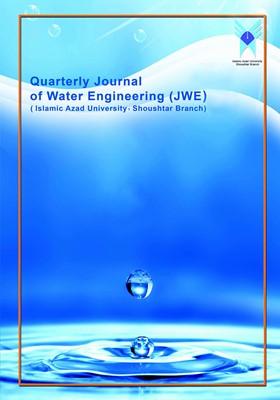Survey Possibility on Reuse of Sanandaj Waste Water Treatment Plan Effluent in Agriculture.
Subject Areas : Water and Environment
sirvan zareei
1
![]() ,
esmaeil ghahramani
2
,
saeed dehestani athar
3
,
bijan noori
4
,
amir zarei
5
,
esmaeil ghahramani
2
,
saeed dehestani athar
3
,
bijan noori
4
,
amir zarei
5
1 - Environmental Health Engineering, Student Research Committee, Kurdistan University of Medical Sciences, Sanandaj, Iran
2 - Department of Environmental Health Engineering, Environmental Health Research Center, Kurdistan University of Medical Sciences, Sanandaj, Iran
3 - Department of Environmental Health Engineering, Environmental Health Research Center, Kurdistan University of Medical Sciences, Sanandaj, Iran
4 - Department of Epidemiology and Biostatistics, Social Determinants of Health Research Center, Kurdistan University of Medical Sciences, Sanandaj, Iran
5 - College of Agricultural Engineering
Isfahan University Of Technology
Keywords: agriculture, Sanandaj, Wastewater treatment, Wastewater reuse,
Abstract :
Water shortage, rapid population growth and the need for development in the agricultural sector have led to the fact that water is not disposed of once a day, and solutions to eliminate this limitation of water resources through the treatment and re-circulation of waste water due to cheap, permanent and reliable sources, and in Accessibility has been caused. In this regard, the possibility of utilization of effluent from Sanandaj sewage treatment plant in agriculture was considered according to the developed standards in order to overcome the problem of water deficit.This cross-sectional study for 12 months for the feasibility of wastewater treatment plant effluent quality Sanandaj sampling and testing to determine by measuring pH, BOD5, COD, TSS, Na +, Mg2 +, No2-, No3-, K + and Ca2 + by using statistical tests were performed and compared to industry standards.The average removal rate parameters pH, BOD5, COD, TSS, respectively 35/1, 15/88, 6/84 and 88/88 and parameters pH, BOD5, COD, TSS effluent respectively 5/7, 5/10, 5/17 and 4/12 is the pH, BOD5 and COD levels of environmental standards and the EPA but does not meet the EPA standard TSS. Compared with the FAO standard SAR limit was evaluated as good and percent sodium.According to independent t-test, a significant difference between effluent quality and standard values were observed (P <0.01). However, due to the operation Water and chosen the irrigation of sensitive crops, effluent quality suitable for agricultural purposes Supplies is.
_||_


